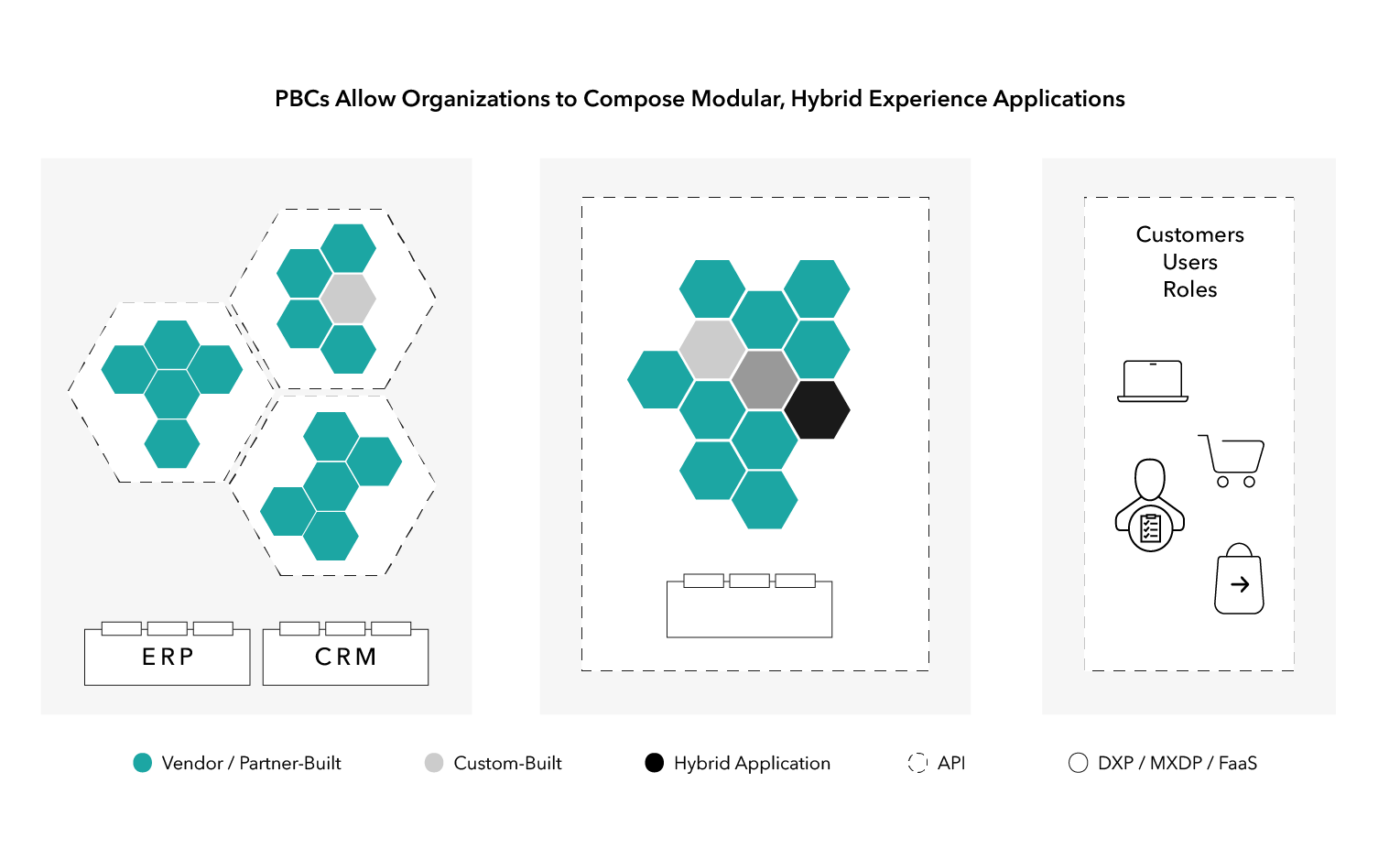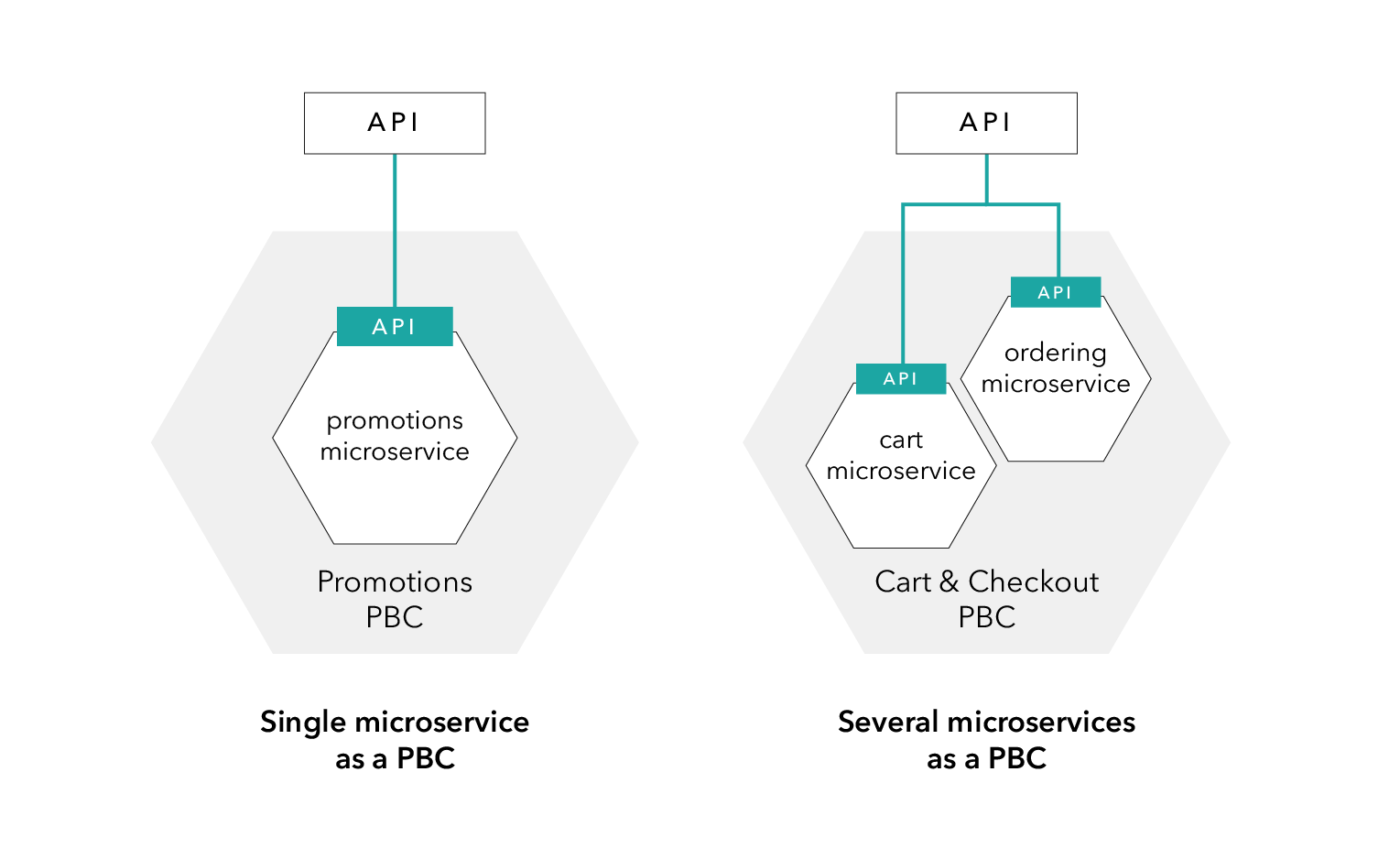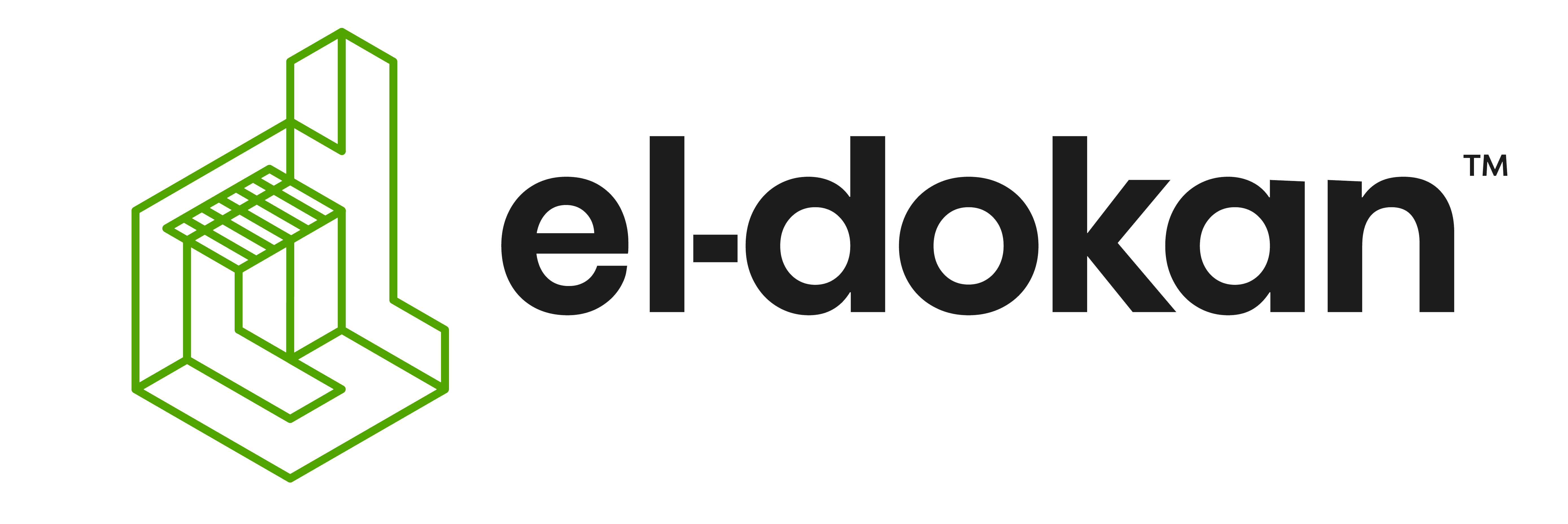What is composable commerce?
Composable commerce is a development approach of selecting best-of-breed commerce components and combining or ‘composing’ them into a custom application built for specific business needs.

Composable commerce achieves this through combining or composing Packaged Business Capabilities (PBCs). Each PBC is a feature or capability of the application and is typically third-party software components. For example, a PBC could be shopping cart and checkout, promotions, or a business user.
A composable approach utilizes various vendors who offer robust, comprehensive functionality for the one thing they do, rather than relying on one vendor to produce standard functionality as a one-size-fits-all offering.
What are the differences between Microservices and PBCs?
Because they are similar – and complementary – these two terms can get confusing. Microservices are a way in which an application is or can be broken down into small functions or features. Packaged Business Capabilities are an aggregated set of microservices.

How is this related to MACH architecture?
MACH architecture (Microservices, API-First, Cloud-Native, and Headless) is, in essence, what composable commerce is supposed to look like.
- Microservices – Microservice-based architecture enables the composability of PBCs. On the other hand, monolithic applications are too tightly coupled and capabilities cannot be deployed independently.
- API-first – When all functionality is exposed via API, it’s possible to take a composable approach to e-commerce development, tying two or more applications or services together.
- Cloud-native – Leveraging full capabilities of the cloud ensures scalability and flexibility across the application. It also makes it easy to take advantage of each part of the application as needed on-demand, and allows you to avoid upgrades.
- Headless – The decoupled nature of headless applications ensures continuous improvement of the customer interface, allowing you to extend the application to any number of endpoints such as connected devices.
By moving towards MACH architecture, you’re enabling yourself to take advantage of a composable approach to e-commerce.
Like MACH architecture, composable commerce allows you to select and deploy best-of-breed, modular applications. You can easily add, replace or remove various capabilities as your needs grow and change. As our friends at Amplience says, “it’s how a technology stack should be.”
Why are B2B businesses choosing composable commerce?
No single vendor offers the best functionality needed for your uniquely complex business and the ever-evolving needs and demands of your customer base. Traditional commerce platforms featured more tightly coupled features and services as an all-in-one bundle, discouraging integrations with existing systems and other best-of-breed PBCs and microservices.
Moving to composable commerce eliminates your risk of buying basic out-of-the-box capabilities and gaining more control over the functionality and performance of your application.
Composable commerce is:
- Modular: Each PBC can be deployed independently, both eliminating risks associated with tight coupling of services and offering flexibility to swap modules out over time.
- Open: Built on open standards, integration patterns and extensibility models, composable commerce encourages easy integrations and customization.
- Flexible: Composable commerce delivers the flexibility and adaptability needed to extend to new customer types, channels, and markets.
- Business-focused: All necessary tools and capabilities for both business buyers and development teams are available, offering full control over the iteration and innovation process at a lower cost and risk.
The flexibility of composable commerce allows businesses to use and develop only the features and functionality necessary to run their business. These applications are often leaner, faster, and more flexible. To work even faster and deliver an experience that’s far superior, this development approach lets you seamlessly combine different best-of-breed components, from content management to payment processing.
With customer demands continuously evolving and the need for digital transformation more important and necessary than ever, composable commerce gives businesses greater control over how their e-commerce application is delivered. The decoupled approach makes it easy to manage e-commerce experiences across channels while setting yourself up for success with a future-proof application.
What should you look for in developing your composable enterprise?
Like with any technology strategy, there are a few things to be considered when developing a composable commerce strategy.
- MACH architecture – The cornerstone of any digital strategy should be the type of technology that provides the flexibility, scalability, and adaptability needed for future-proof success. With its modern decoupled architecture native to the cloud, MACH architecture is necessary for building a true composable commerce strategy.
- Fully documented APIs and rapid development tools – Because composable commerce is about selecting best-of-breed vendors to create a custom technology stack, it’s necessary to have fully documented APIs. Pairing best-in-class documentation with robust rapid development tools will make development efforts easier and less time-consuming.
- Support – Extensive and fast support, such as through Slack communities or other open forums, make cross-functional development and cross-vendor collaboration of applications easier.

